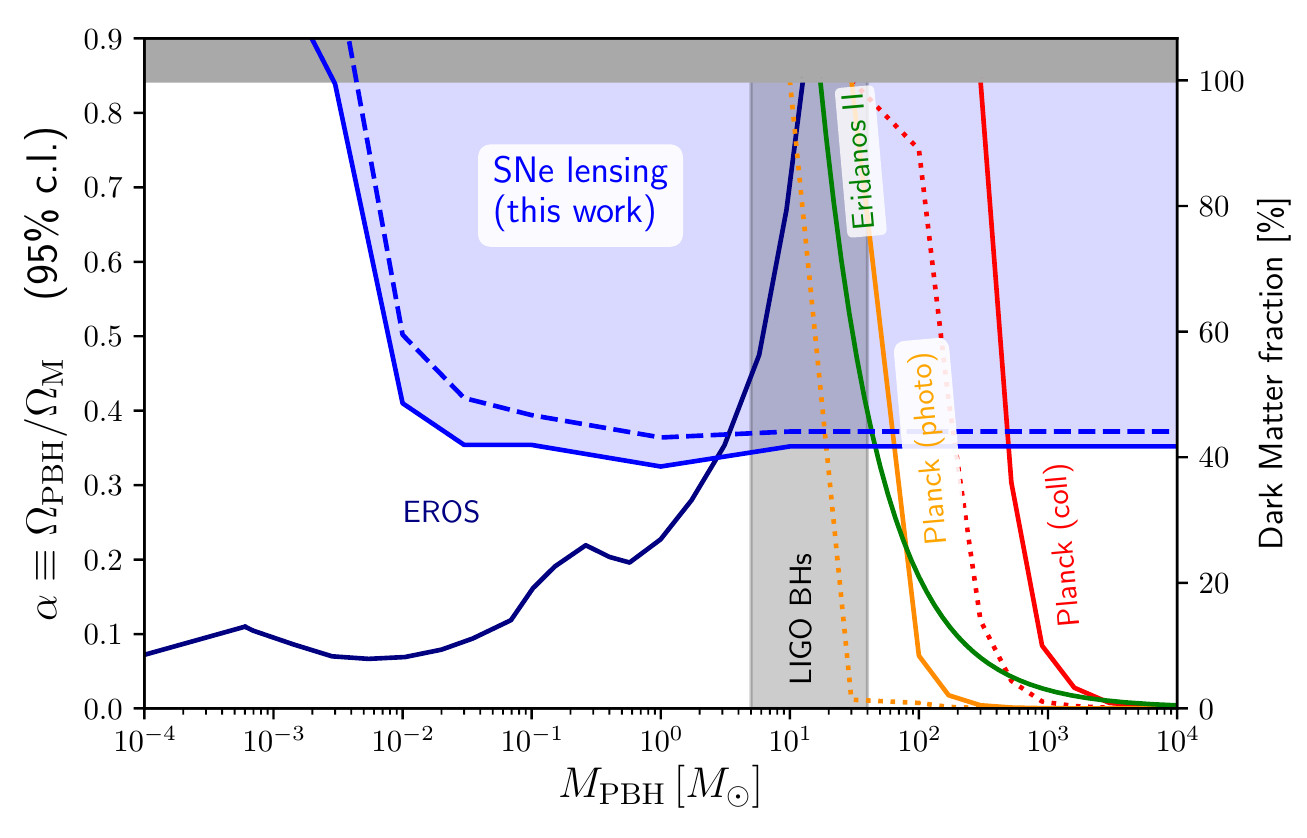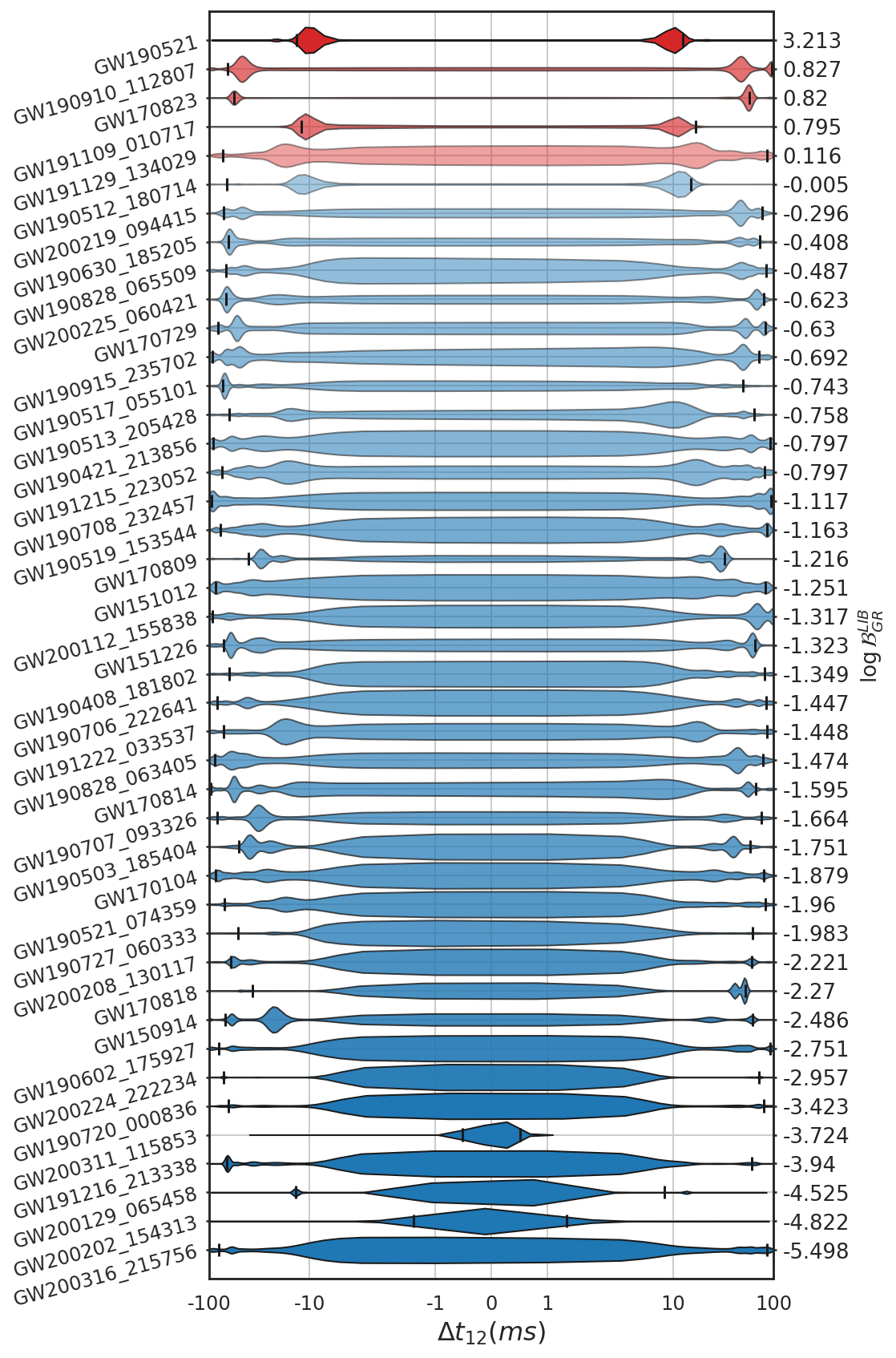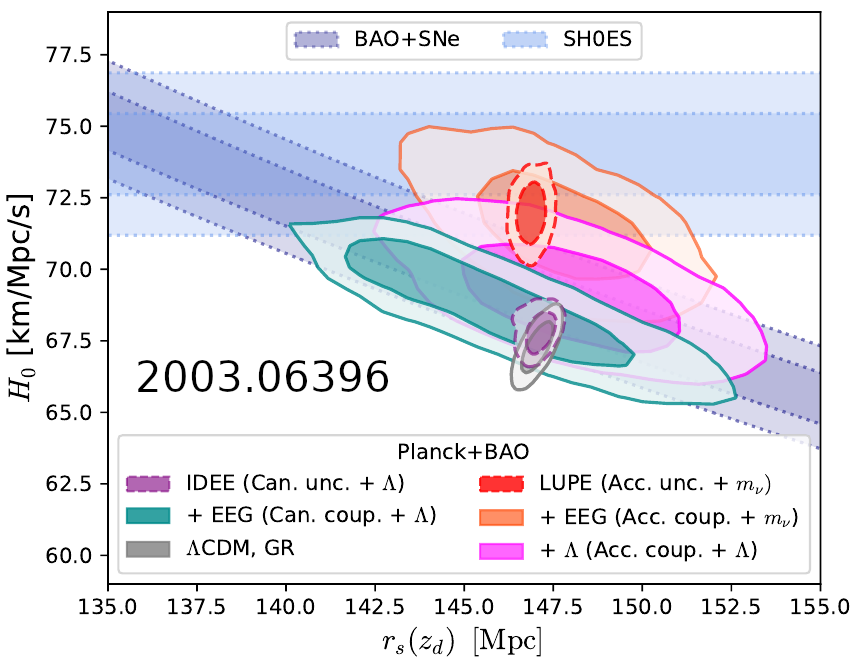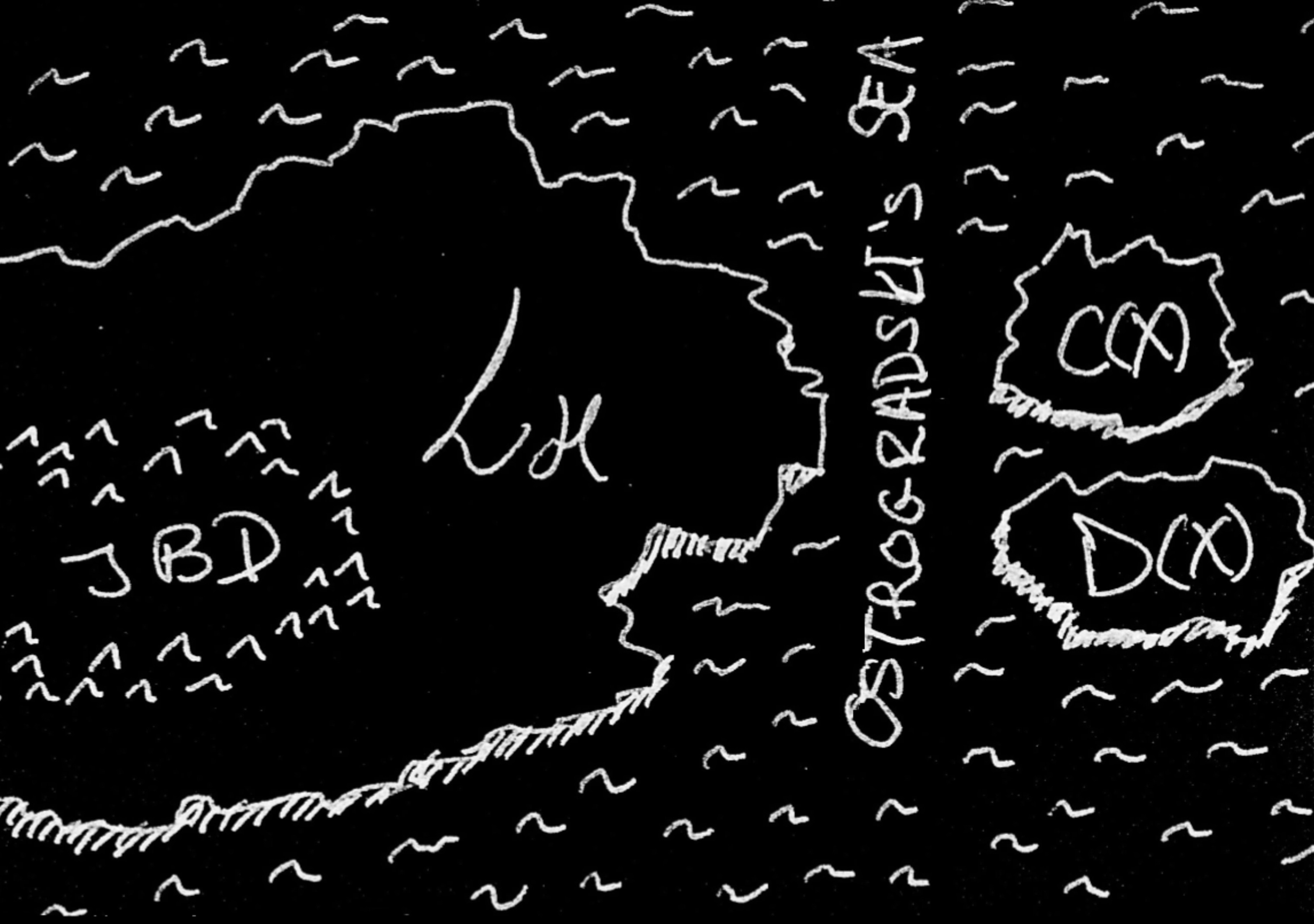

I work on the intersection between cosmology, astrophysics and fundamental physics. I use gravitational waves, gravitational lensing, cosmic microwave background, large scale structure and other cosmological observations to test the laws of gravity and the nature of dark energy and dark matter. More recently, I am developing new methods to discover and characterize compact objects using gravitational waves and gravitational lensing.
For a full, updated account you can take a look at publication databases
or look at the brief descriptions of my work on gravitational lensing, dark matter & black holes, gravitational waves & tests of gravity, dark energy and cosmology, gravitatoinal theories and future gravitational-wave detectors.
 Gravitational lensing effects probe the Universe's darkest objects: black holes and dark matter halos. The lack of gravitationally magnified type Ia supernovae sets bounds on the abundance of compact objects, ruling out LIGO-Virgo black holes as the dominant dark matter component.
Supermassive black hole binaries can produce extreme magnifications of background stars: this will allow us to discover these systems and characterize their dynamics, including the emission of gravitational waves (GWs).
The propagation of GWs provides valuable opportunties to illuminate dark objects:
Lensing of GWs allows us to characterize gravitational lenses thanks to wave diffraction and interference, providing stringent limits on dark-matter objects and their morphology. My group has developed the GLoW code to investigate wave-optics lensing phenomena.
Gravitational lensing effects probe the Universe's darkest objects: black holes and dark matter halos. The lack of gravitationally magnified type Ia supernovae sets bounds on the abundance of compact objects, ruling out LIGO-Virgo black holes as the dominant dark matter component.
Supermassive black hole binaries can produce extreme magnifications of background stars: this will allow us to discover these systems and characterize their dynamics, including the emission of gravitational waves (GWs).
The propagation of GWs provides valuable opportunties to illuminate dark objects:
Lensing of GWs allows us to characterize gravitational lenses thanks to wave diffraction and interference, providing stringent limits on dark-matter objects and their morphology. My group has developed the GLoW code to investigate wave-optics lensing phenomena.
Selected publications:
Limits on stellar-mass compact objects as dark matter from gravitational lensing of type Ia supernovae M. Zumalacarregui, U. Seljak, Phys. Rev. Lett. 121, 141101 (2018) (Editor's suggestion, Physics Viewpoint)
GLoW: novel methods for wave-optics phenomena in gravitational lensing H. Villarrubia-Rojo,S. Savastano, M. Zumalacárregui, L. Choi, S. Goyal, L. Dai, G. Tambalo.
Black holes as telescopes: Discovering supermassive binaries through quasi-periodic lensed starlight H. Wang, M. Zumalacárregui, B. Kocsis.
Lens Stochastic Diffraction: A Signature of Compact Structures in Gravitational-Wave Data M. Zumalacárregui.
Weakly Lensed Gravitational Waves: Probing Cosmic Structures with Wave-Optics Features S. Savastano, G. Tambalo, H. Villarrubia-Rojo, M. Zumalacárregui.
Gravitational wave lensing as a probe of halo properties and dark matter G. Tambalo, M. Zumalacárregui, L. Dai, M. Cheung.
Through the lens of Sgr A*: identifying strongly lensed Continuous Gravitational Waves beyond the Einstein radius S. Savastano, F. Vernizzi, M. Zumalacárregui
Lensing of gravitational waves: efficient wave-optics methods and validation with symmetric lenses G. Tambalo, M. Zumalacárregui, L. Dai, M. Cheung.
Selected Talks:
↦ Lensing of GWs: New Opportunities for Fundamental Physicsr at Cosmo from Home (2024).
↦ GW lensing as a probe of cosmic structures and dark matter at LISA Symposium (2022).
↦ Talk and discussion on PBH constraints with lensing of SNe at CERN workshop (2018).
 The discovery of gravitational waves (GW) offers new opportunities for the study of gravity and cosmology. My work contributed to understand GW propagation in theories beyond Einstein Gravity and anticipate the GW speed as the most powerful tool to confirm or discard a large classes of theories. The detection of GW170817, the first neutron-star merger, allowed a very precise measurement of the GW speed that spectacularly ruled out entire classes of gravity theories and dark energy models.
GW lensing beyond Einstein's GR provides further opportunities: deviations from inhomogeneity mix the two GW polarizations, leading to birefringence and dispersion effects that can be tested with black hole mergers. We recently performed a search for birefringence on 43 GW events, setting stringent bounds on deviations from GR. The spin-orbit coupling between a GW and the background curvature can be observed for GWs emitted in the vicinity of a massive black hole.
The discovery of gravitational waves (GW) offers new opportunities for the study of gravity and cosmology. My work contributed to understand GW propagation in theories beyond Einstein Gravity and anticipate the GW speed as the most powerful tool to confirm or discard a large classes of theories. The detection of GW170817, the first neutron-star merger, allowed a very precise measurement of the GW speed that spectacularly ruled out entire classes of gravity theories and dark energy models.
GW lensing beyond Einstein's GR provides further opportunities: deviations from inhomogeneity mix the two GW polarizations, leading to birefringence and dispersion effects that can be tested with black hole mergers. We recently performed a search for birefringence on 43 GW events, setting stringent bounds on deviations from GR. The spin-orbit coupling between a GW and the background curvature can be observed for GWs emitted in the vicinity of a massive black hole.
Selected publications:
Probing lens-induced gravitational-wave birefringence as a test of general relativity, S. Goyal, A. Vijaykumar J.M. Ezquiaga, M. Zumalacarregui
Dark Energy after GW170817: dead ends and the road ahead, J.M. Ezquiaga, M. Zumalacarregui Phys.Rev.Lett. 119 251304 (2017) (Editor's suggestion, Physics Viewpoint )
Gravitational wave lensing beyond general relativity: birefringence, echoes and shadows, J.M. Ezquiaga, M. Zumalacarregui Phys. Rev. D 102, 124048 (2020), (Editor's suggestion)
Gravitational wave propagation beyond General Relativity: geometric optic expansion and lens-induced dispersion, N. Menadeo, M. Zumalacarregui
Speed of Gravitational Waves and the Fate of Scalar-Tensor Gravity, D. Bettoni, J.M. Ezquiaga, K. Hinterbichler, M. Zumalacarregui PRD 95 084029
Testing modified gravity at cosmological distances with LISA standard sirens, LISA Cosmology Working Group JCAP 1907 024
From the gates of the abyss: Frequency- and polarization-dependent lensing of gravitational waves in strong gravitational fields M. Oancea, R. Stiskalek, M. Zumalacárregui.
Review:
Dark Energy in light of Multi-Messenger Gravitational-Wave astronomy, J.M. Ezquiaga, M. Zumalacarregui Front.Astron.Space Sci. 5 (2018) 44
Selected Talks:
↦ Talks on GW lensing beyond GR at LISA Symposium 2020 (short) and SISSA Gravity webinars (long) .
↦ Talk on GWs and Dark Energy at DARKMOD conference, IPhT Saclay (2017).
 Understanding dark energy, the mysterious source of the Universe's acceleration, is a major goal of observational and theoretical cosmology. My work has focused on ways to test different dark energy physics using cosmological and other data. I develop the hi_class code, an accurate, fast and flexible code to obtain cosmological predictions in general dark energy models. I have applied hi_class (and similar codes) to test gravity and scenarios for cosmic acceleration.
Some of these models have interesting features: for instance, the covariant Galileon is able to reconcile the CMB and distance-ladder measurement of H0.
We recently re-examined DESI's evidence for dynamical dark energy by performing a model independent reconstruction.
Research in non-standard cosmologies is also useful to revise model-dependent assumption in data analysis techniques.
Understanding dark energy, the mysterious source of the Universe's acceleration, is a major goal of observational and theoretical cosmology. My work has focused on ways to test different dark energy physics using cosmological and other data. I develop the hi_class code, an accurate, fast and flexible code to obtain cosmological predictions in general dark energy models. I have applied hi_class (and similar codes) to test gravity and scenarios for cosmic acceleration.
Some of these models have interesting features: for instance, the covariant Galileon is able to reconcile the CMB and distance-ladder measurement of H0.
We recently re-examined DESI's evidence for dynamical dark energy by performing a model independent reconstruction.
Research in non-standard cosmologies is also useful to revise model-dependent assumption in data analysis techniques.
Selected publications:
hi_class: Horndeski in the Cosmic Linear Anisotropy Solving System, M. Zumalacarregui, E. Bellini , I. Sawicki , J. Lesgourgues, P. G. Ferreira JCAP 1708 019
Gravity in the Era of Equality: Towards solutions to the Hubble problem without fine-tuned initial conditions M. Zumalacarregui PRD 102 (2020) 2, 023523
Reconstructing the dark energy density in light of DESI BAO observations M. Berti, E. Bellini, C. Bonvin, M. Kunz, M.Viel, M. Zumalacarregui PRD 112 (2025) 2, 023518 (Editor's suggestion)
Galileon gravity in light of ISW, CMB, BAO and H0 data J. Renk, M. Zumalacarregui, F. Montanari, A. Barreira JCAP 1710 020
Observational future of cosmological scalar-tensor theories, D. Alonso, E. Bellini, P. G. Ferreira, M. Zumalacarregui PRD95 063502
Gravity at the horizon: on relativistic effects, CMB-LSS correlations and ultra-large scales in Horndeski's theory J. Renk, M. Zumalacarregui, F. Montanari JCAP 1607 040
Nonlinear evolution of the baryon acoustic oscillation scale in alternative theories of gravity, E. Bellini, M. Zumalacarregui PRD92 063522
Screening Modifications of Gravity through Disformally Coupled Fields, T. Koivisto, D. Mota, M. Zumalacarregui Phys.Rev.Lett. 109 241102
Surfing gravitational waves: can bigravity survive growing tensor modes?, L. Amendola, F. Koennig, M. Martinelli, V. Pettorino, M. Zumalacarregui JCAP 1505 052
Tension in the Void: Cosmic Rulers Strain Inhomogeneous Cosmologies, M. Zumalacarregui, J. Garcia-Bellido and P. Ruiz-Lapuente, JCAP 1210 009
Disformal Scalar Fields and the Dark Sector of the Universe, M. Zumalacarregui, T. Koivisto, D. Mota, P. Ruiz-Lapuente JCAP 1005 038
Selected Talks:
↦ Review talk on Dark Energy at the EuCAPT Annual Symposium (2022).
↦ Talk on solutions to the H0 problem beyond GR at the Cosmology from Home Conference (2020).
↦ Lecture on alternative theories of gravity at the Cosmology School in the Canary Islands (2017).
 Important insights into dark energy are often gained from theoretical considerations, which may reveal new possibilities or obstructions in known models. Redefinitions of the fundamental fields are a useful tools to examine extended theories of gravity. By using generalized field redefinitions, I presented the first examples of viable theories beyond Horndeski, previously thought to be the most general ghost-free theory of its class. Earlier I had used a more restricted field redefinition to show the equivalence between disformally coupled theories and DBI Galileons, generalizing the notion of the Einstein and Jordan frames.
Important insights into dark energy are often gained from theoretical considerations, which may reveal new possibilities or obstructions in known models. Redefinitions of the fundamental fields are a useful tools to examine extended theories of gravity. By using generalized field redefinitions, I presented the first examples of viable theories beyond Horndeski, previously thought to be the most general ghost-free theory of its class. Earlier I had used a more restricted field redefinition to show the equivalence between disformally coupled theories and DBI Galileons, generalizing the notion of the Einstein and Jordan frames.
Selected publications:
Transforming gravity: from derivative couplings to matter to second-order scalar-tensor theories beyond the Horndeski Lagrangian,
M. Zumalacarregui, J. Garcia-Bellido PRD89 064046
DBI Galileons in the Einstein Frame: Local Gravity and Cosmology, M. Zumalacarregui, T. Koivisto, D. Mota PRD 87 083010
Shaken, not stirred: kinetic mixing in scalar-tensor theories of gravity, D. Bettoni, M. Zumalacarregui PRD 91 104009
Towards the most general scalar-tensor theories of gravity: a unified approach in the language of differential forms, J.M. Ezquiaga, J. Garcia-Bellido, M. Zumalacarregui PRD 94 024005
Selected Talk:
↦ Talk on beyond Horndeski theories at Extended Theories of Gravity in NORDITA (2015).
The LIGO-Virgo-Kagra network is just the beginning of GW astronomy: future detectors on the ground and in space will enable exquisite GW measurements, probing the furtherst depths of the universe and exploring new frequencie bands. I an contributing to develop the science case for these facilities.
Selected publications:
Cosmology with the Laser Interferometer Space Antenna, P. Auclair et al. [LISA Cosmology Working Group] arXiv:2204.05434
Multi-messenger gravitational lensing, G. Smith et al. arXiv:2503.19973
The Next Generation Global Gravitational Wave Observatory: The Science Book, V. Kalogera et al. 2111.06990
Unveiling the Gravitational Universe at µ-Hz Frequencies, A. Sesana et al. 1908.11391